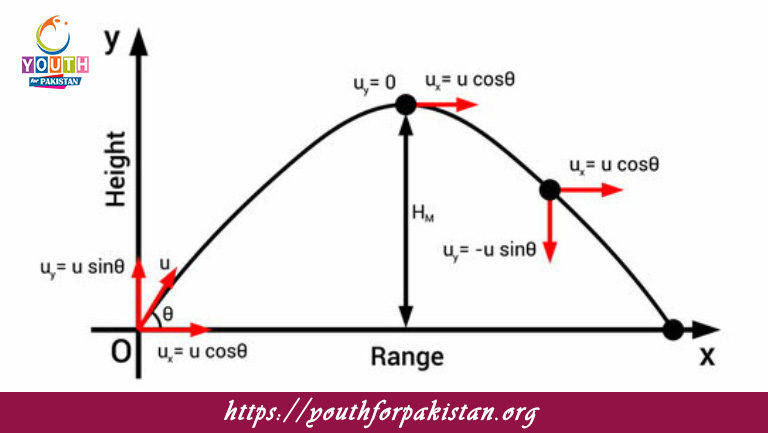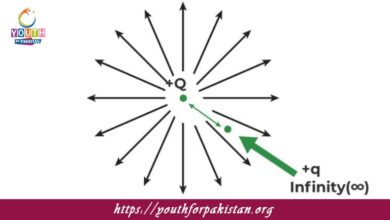Characteristics Of Projectile Motion MDCAT MCQs with Answers

Welcome to the Characteristics Of Projectile Motion MDCAT MCQs with Answers. In this post, we have shared Characteristics Of Projectile Motion Multiple Choice Questions and Answers for PMC MDCAT 2024. Each question in MDCAT Physics offers a chance to enhance your knowledge regarding Characteristics Of Projectile Motion MCQs in this MDCAT Online Test.
Characteristics Of Projectile Motion MDCAT MCQs Test Preparations
The path followed by a projectile is called:
a) Trajectory
b) Orbit
c) Pathway
d) Route
The horizontal motion of a projectile is:
a) Accelerated
b) Constant
c) Decelerated
d) Zero
The vertical motion of a projectile is:
a) Uniform
b) Non-uniform
c) Constant
d) Zero
The maximum height of a projectile is achieved when:
a) The vertical velocity is zero
b) The horizontal velocity is zero
c) The projectile hits the ground
d) The vertical velocity is maximum
The range of a projectile depends on:
a) Initial velocity
b) Angle of projection
c) Acceleration due to gravity
d) All of the above
In the absence of air resistance, the time of flight of a projectile is determined by:
a) Initial velocity
b) Angle of projection
c) Both initial velocity and angle
d) Only the height of projection
The horizontal range of a projectile is maximum when the angle of projection is:
a) 30 degrees
b) 45 degrees
c) 60 degrees
d) 90 degrees
The time to reach maximum height is:
a) Half the total time of flight
b) Equal to the total time of flight
c) Double the total time of flight
d) Zero
The acceleration of a projectile in the horizontal direction is:
a) Zero
b) Constant
c) Increasing
d) Decreasing
The vertical component of velocity at the maximum height is:
a) Maximum
b) Zero
c) Equal to the horizontal component
d) Minimum
The horizontal range of a projectile is affected by:
a) Gravity
b) Initial vertical velocity
c) Initial horizontal velocity
d) Initial height of projection
The time of flight of a projectile is independent of:
a) Initial velocity
b) Angle of projection
c) Acceleration due to gravity
d) Horizontal distance traveled
The vertical acceleration of a projectile is equal to:
a) Initial velocity
b) Acceleration due to gravity
c) Zero
d) Initial horizontal velocity
The range of a projectile is maximum when the angle of projection is:
a) 30 degrees
b) 45 degrees
c) 60 degrees
d) 90 degrees
The height of a projectile is maximum when:
a) The angle of projection is 30 degrees
b) The angle of projection is 45 degrees
c) The angle of projection is 60 degrees
d) The angle of projection is 90 degrees
The horizontal range of a projectile is:
a) Directly proportional to the initial velocity
b) Inversely proportional to the angle of projection
c) Directly proportional to the square of the initial velocity
d) Inversely proportional to the square of the angle of projection
At the peak of its trajectory, the velocity of the projectile is:
a) Zero
b) Equal to the initial velocity
c) Equal to the horizontal component of the initial velocity
d) Equal to the vertical component of the initial velocity
The motion of a projectile can be analyzed as:
a) One-dimensional motion
b) Two-dimensional motion
c) Three-dimensional motion
d) None of the above
The time of flight of a projectile launched from a height h is:
a) Independent of initial velocity
b) Directly proportional to the height h
c) Independent of height h
d) Directly proportional to the square root of h
The horizontal component of velocity remains:
a) Constant
b) Increasing
c) Decreasing
d) Zero
The vertical acceleration of a projectile is:
a) Constant
b) Zero
c) Increasing
d) Decreasing
The trajectory of a projectile is:
a) Parabolic
b) Circular
c) Linear
d) Elliptical
The initial velocity required to achieve a specific range is:
a) Directly proportional to the square root of the range
b) Inversely proportional to the square root of the range
c) Directly proportional to the range
d) Inversely proportional to the range
The maximum range for a given initial velocity is achieved at:
a) 30 degrees
b) 45 degrees
c) 60 degrees
d) 90 degrees
At any point in its trajectory, the velocity of a projectile can be resolved into:
a) Only horizontal component
b) Only vertical component
c) Horizontal and vertical components
d) None of the above
The time to reach maximum height depends on:
a) Initial velocity
b) Acceleration due to gravity
c) Both initial velocity and acceleration due to gravity
d) Angle of projection
The trajectory of a projectile launched with equal initial velocities at angles θ and 90-θ are:
a) Identical
b) Different
c) Parallel
d) Perpendicular
The horizontal distance covered by a projectile is:
a) Directly proportional to the initial velocity squared
b) Inversely proportional to the angle of projection
c) Directly proportional to the time of flight
d) All of the above
The vertical velocity of a projectile is zero at:
a) The beginning of the flight
b) The end of the flight
c) The maximum height
d) The impact point
The horizontal displacement of a projectile depends on:
a) Time of flight
b) Horizontal component of initial velocity
c) Both time of flight and horizontal component of initial velocity
d) Vertical component of initial velocity
The range of a projectile launched from an elevated position is:
a) Less than when launched from the ground
b) Greater than when launched from the ground
c) Equal to when launched from the ground
d) Independent of launch height
The vertical component of the projectile’s motion is influenced by:
a) Gravity
b) Horizontal velocity
c) Air resistance
d) None of the above
The range of a projectile increases with an increase in:
a) Angle of projection
b) Initial velocity
c) Height of projection
d) All of the above
The horizontal velocity of a projectile is:
a) Constant throughout the motion
b) Increasing throughout the motion
c) Decreasing throughout the motion
d) Zero throughout the motion
The time to reach maximum height is:
a) Equal to the time to reach the ground
b) Twice the time to reach the ground
c) Half the total time of flight
d) Independent of initial velocity
The time of flight of a projectile is influenced by:
a) Initial speed
b) Angle of projection
c) Height of projection
d) All of the above
If you are interested to enhance your knowledge regarding Physics, Chemistry, Computer, and Biology please click on the link of each category, you will be redirected to dedicated website for each category.





